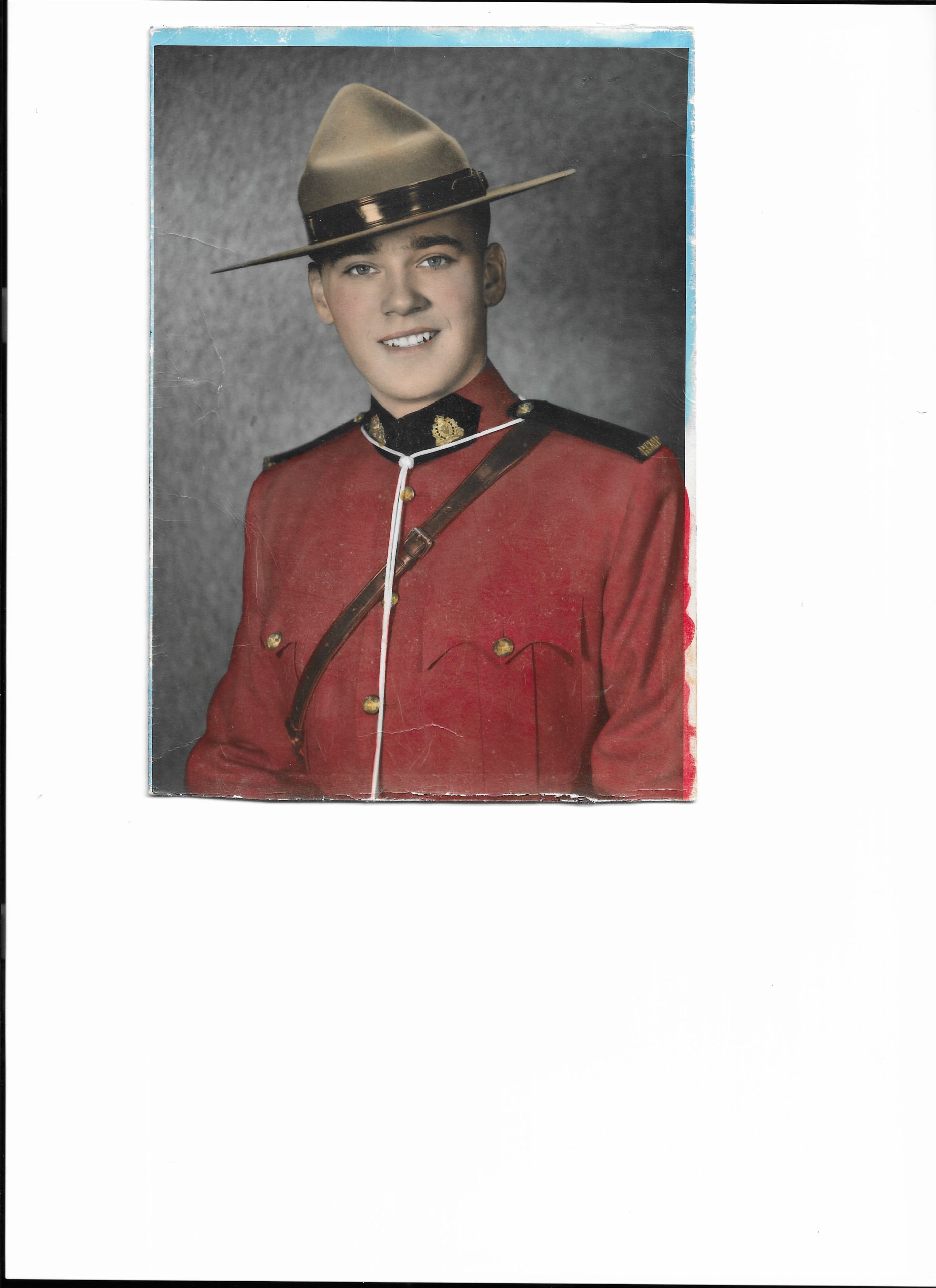John Robert LaGrange

Home Town: Red Deer, AB
Training Division: “Depot”
Troop: TR. A 1956
Regimental Number: 19203
Divisions Served: “F,” “G,” “E”
Pillar Location: Pillar IX, Row 25, Column D
Story:
I joined the Force on December 16, 1955 and completed training in September, 1956. After graduation I served in 3 Saskatchewan postings: Indian Head, Moose Jaw and Regina Highway Patrol.
In May 1958 I was transferred to Mayo, Yukon Territories for 1 year and the following year 1959-1960 to Whitehorse, Y.T. After marrying Lorna Gould in Regina, Saskatchewan in June 1960, I was transferred to Burnaby, B.C. serving in Highway Patrol, General Duty and plain clothes GIS Division.
During service in Saskatchewan and in Mayo Y.T. ,I was privileged to have spoken at length to three elderly individuals who were born as early as 1850 and shortly thereafter.
My first posting after training in 1956 was a three man detachment in Indian Head, Sask. encompassing both a large agricultural area and a Native Reserve near Sintaluta.
One elder from the Reserve used to walk with a cane up to Hwy 1 and claimed he was 106 years old. He related stories of his youth, and how, at the age of sixteen, he requested to become a warrior and hunter in 1866 – one year before Canada became a country. His father impressed upon him that during the initiation ceremony to become a hunter/warrior, he would be pegged to the ground and branded on his chest. Not one scream of pain could pass his lips or he’d be sent back to work only with the women on domestic chores. He passed the test and during his life eventually became chief of his Nation. I personally saw the brand on his chest in the form of an eagle. He vividly remembered the first NWMP patrols when he was a young man in his twenties.
In Mayo, Y.T. an elderly native couple, Mr. and Mrs. Itsitsaw, who only spoke Cree, were living in a small log cabin. They had survived off the land for the past 100 years, and because of their age (he was 105 and she was 98), their children insisted for safety reasons, that they should now live within the village confines. To receive their Government cheques, it was my responsibility to take the couple to the small local bank to sign for their monies with an “X”. I would then take the money and accompany them to the local Trading Post where they could select their food and supplies. Any remaining monies were put into an old Dominion Tobacco tin in case they needed supplies before the next “pay day”. One very hot summer day, Mr. Itsitsaw (or “Itsi” as he was affectionately called by the locals), walked to the Detachment office, and tried to make me understand through Cree and sign language, that his wife was sick and needed help. Walking back to the cabin together, I found her on the bed, moaning in obvious distress. I realized that she was suffering from the intense heat wave and began to peel off layers of buckskin from the waist up and proceeded to give her a cooling down sponge bath. I don’t know to this day if she enjoyed me or the sponge bath but I could tell through the big smile on her face (showing her only two teeth) that it had solved the problem. “Itsi” just smiled and said “police good”.
My service of twelve years brought experiences that all officers encounter; e.g. thefts, break-ins, homicides, suicides, sex crimes, traffic deaths and more, but I have been most privileged by the memories of having spoken to people who were living history. These people who were born and experienced life before we were a country and before the rule of law was established – these people, made me realize what they have handed down – a young country that obliges me and all Canadians to protect and carry on the hard work and ideals of those who went before us
